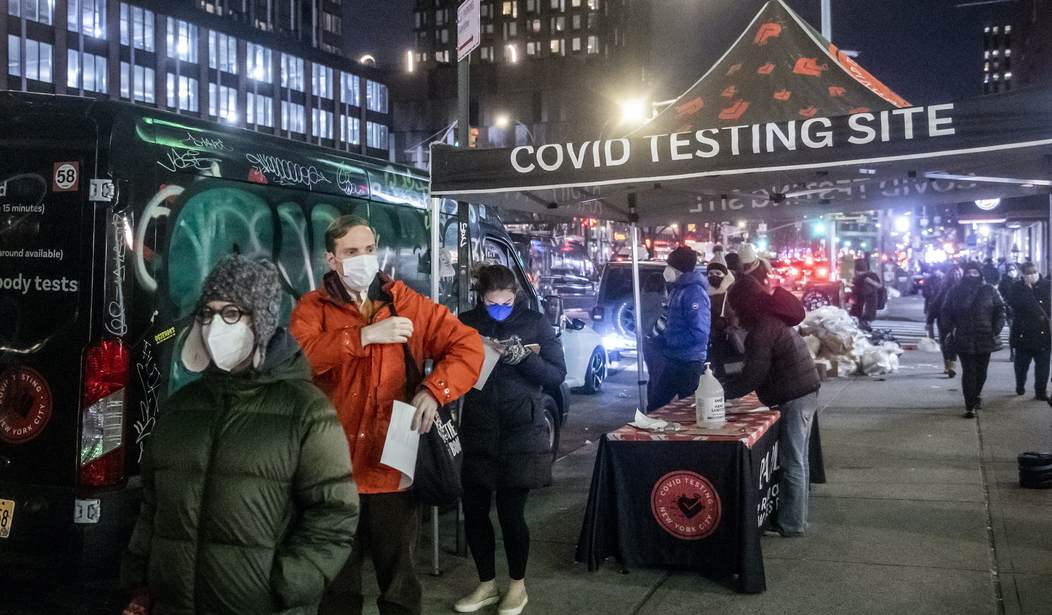How often do you see scientists scrambling to debunk a piece because it’s *too scary* about COVID rather than not scary enough?
It’s happening on social media today as virologists voice their contempt for this buzzworthy analysis, which cites one preliminary study and some questionable supporting material to make two shocking claims. One: Being infected by Omicron or one of its substrains may confer “no immunity” against future infections, theoretically making reinfection possible every few weeks. Two: It’s possible that each reinfection “depletes T cells and destabilizes immune function,” leading to “cumulative” immune damage — in which case each reinfection could cause increasingly severe illness or other health complications.
The data also shows that each reinfection confers no immunity. A summer infection, for example, will not protect you against a fall infection. But each and every infection will damage your immune system regardless of how mild the symptoms…
There is more bad news. Past infection by older variants dampen rather than strengthen immune protection even among those with three vaccinations. “That previous SARS-CoV-2 infection history can imprint such a profound, negative impact on subsequent protective immunity is an unexpected consequence of COVID-19,” noted the researchers in Science…
So if each COVID infection depletes T cells and destabilizes immune function and the damage is cumulative, then policies that allow the virus to run riot through the population will not only cause immense suffering but erode public health along with trust in government. The word diabolical comes to mind. The British immunologist Danny Altmann compares the situation to “being trapped on a rollercoaster in a horror film.”
Terrifying. But even to a layman like me, it seems unlikely for two reasons. Reason one:

That’s the case count in the U.S. over time. You see a ginormous mega-spike this past winter when the original Omicron arrived and a much less impressive mini-spike right now as BA.4 and BA.5 blaze across the U.S. Those two subvariants are the most contagious and immune-evasive strains of the virus known to man, scientists tell us, so we should be seeing an ultra-mega spike right now — if it’s true that previous Omicron infections confer no immunity.
That’s not what we’re seeing. In fact, the BA.4/BA.5 wave has yet to reach the peak of the Delta wave last summer, although that may be an artifact of less lab testing and more at-home rapid testing among the population in 2022.
Reason two:

That’s the curve of hospitalizations in the U.S. That curve should also be on its way up steeply — if it’s true that successive reinfections are gradually wearing down people’s immune systems, leaving them unable to cope with a virus they would have easily fended off months before. But the increase isn’t steep. And notably, the number of daily patients needing ICU care is flat. If T-cells in people who’ve experienced multiple infections are being “depleted,” shouldn’t the share of ICU patients as a percentage of total hospitalized patients be growing as more reinfections occur among the public?
We can’t draw firm conclusions based on two graphs, but studying those two curves, which would you suspect is more likely? That COVID is getting more dangerous as more people get vaccinated and/or recover from infection, or less dangerous?
The expert to read on this subject is virologist Angela Rasmussen, who went on a tirade today about the logical leaps and dubious science behind the claims made in the piece quoted up top. Rasmussen isn’t alone — at least three other scientists on Twitter have taken a scalpel to the piece, irate at the degree of scaremongering going on. Yes, says Rasmussen, you should absolutely continue to take precautions against SARS-CoV-2, a formidable virus that’s still evolving. But no, there’s no reason to think that infection confers “no immunity” or that you’ll get sicker with each new infection.
And the stuff about T cell depletion is pure garbage, the result of heavy cherry picking and quoting a single person whose assertions have not been borne out in the immunology literature, no matter how many “who will dare dispute me now?” challenges he issues on Twitter.
— Dr. Angela Rasmussen (@angie_rasmussen) July 6, 2022
I’d point to another study supporting claims of prolonged, clinically meaningful immune deficiency caused by T cell depletion, but there aren’t any.
However, that’s not stopping the “airborne AIDS” crowd, who are finding their every doomsaying wish fulfilled by this article. pic.twitter.com/e6voAdHt39
— Dr. Angela Rasmussen (@angie_rasmussen) July 6, 2022
The idea that reinfections may produce progressively more severe illness is based on a single study, and that study is hotly disputed:
4) “Let’s start with a startling U.S. Veterans Affairs study involving five million people.”
OK so this is the (now infamous) reinfection study.
No mention in the article of:
– This being a preprint, not yet peer reviewed.
– The numerous challenges made around the study.— Omicron Data (@OmicronData) July 5, 2022
This is a clearly biased article, with a clear agenda.
This in itself is fine, within reason. But the data we DO have has been horrifically misrepresented (and in a lot of sections there is pure speculation).
I view this article as unethical.
— Omicron Data (@OmicronData) July 5, 2022
Why are experts so angry? It’s not just the science behind the piece, it’s the fact that it’s being used to justify a strategy that everyone outside of the Chinese government recognizes is impossible: Zero COVID. “Elimination remains the only long-term and bottom-up strategy that makes any sense in terms of risk reduction. It is also imminently doable with adequate testing, masking, tracing, supported sick leave and targeted goals for reducing transmission,” the author of the Tyee article writes. That’s simply not happening. So why not focus on practical risk mitigation instead?
Speaking of which, read this thread about people catching COVID on planes even when they’re wearing quality N95 masks. Aren’t infections on planes supposed to be rare due to how frequently the air in the cabin is exchanged? They are, but it turns out that the air exchange doesn’t start until after the plane takes off. The infections are probably happening while the plane is boarding or sitting on the runway, while the cabin is thick with CO2 — and viruses. Mask up! At least until you’re airborne.








Join the conversation as a VIP Member